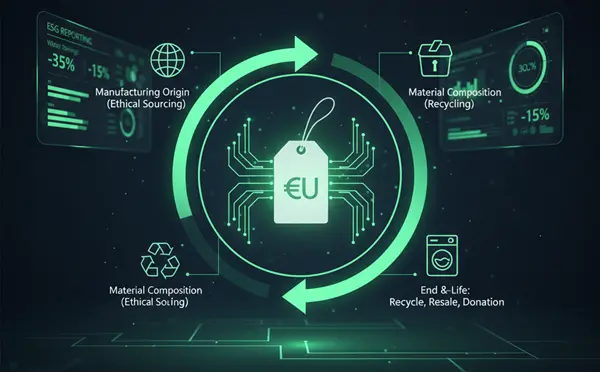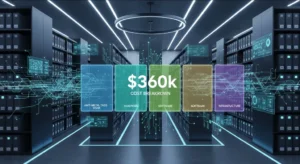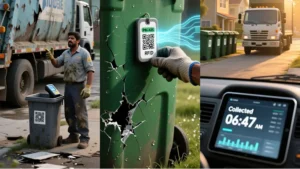
2025 RFID Laundry Trends: Sustainability, IoT Integration, and Smart Tracking
Custom Your RFID Cards
The Second Curve: RFID Moves Beyond Loss Prevention
RFID’s role in laundry is changing fast.
For years, the focus was simple: use RFID tags to keep linens and uniforms from going missing. That “1.0 era” delivered huge savings through loss prevention and basic inventory tracking. But now, RFID is entering its next phase. It’s not just a tracker anymore, it’s a powerful data engine driving automation, sustainability, and smarter business decisions.
This is an industry-wide shift: global RFID laundry systems are set to jump from $2.18 billion in 2024 to $6.44 billion by 2033, with annual growth over 12%. (source) Today, RFID is about much more than tracking. It’s shaping how companies operate and make decisions. This guide explores the top three trends defining the future of your laundry business.
Trend 1: Sustainability (ESG) and the Circular Economy
For today’s executives, ESG reporting is required and credible data is key. RFID delivers that proof.
The Digital Product Passport
The most significant trend is the rise of the “Digital Product Passport” (DPP) (source), a concept being driven by regulations like those from the European Union. This requires companies to digitally track a product’s entire lifecycle. An RFID tag is the only technology that can serve as a durable, permanent “digital passport” for a textile, recording: Its material composition (for recycling). Its manufacturing origin (for ethical sourcing). Its complete wash cycle and repair history.

Enabling the Circular Economy
This digital passport makes circularity possible. Instead of ending up in landfills, linens can be identified at end-of-life and directed to recycling, resale, or donation.
Reliable ESG Metrics
RFID transforms sustainability from a guess into an audited fact. By tracking wash cycles and materials, laundry systems can optimize usage and cut down on water, energy, and chemical consumption which provides a real, reportable ESG progress (source).
➡️ [Deep Dive] For high-compliance environments, RFID is already the standard. See how it’s used to create auditable sterilization logs for [RFID for Healthcare: Enhancing Patient Safety & Sterilization Tracking].
➡️ [Product Focus] This trend also applies to the tags themselves. Our Heat-Resistant Silicone RFID Laundry Tag is designed for extreme durability and chemical inertness, making it a more sustainable, long-life choice than less durable tags.
Trend 2: IoT Integration and the Smart Factory
Industry 4.0 (source) means fully automated, intelligent factories, and in laundry, RFID is the foundation.
RFID as an IoT Network
Every RFID tag in your facility is a passive Internet of Things (IoT) sensor, turning your linens into live data points. This creates a real-time digital twin of your operation, eliminating guesswork.(source)

Integration with ERP and Management Systems
Now, RFID doesn’t just run alone. The data from these tags is now being fed directly into Enterprise Resource Planning (ERP) and Laundry Management Systems (LMS). This enables true, trigger-based automation: Example: When the system detects that a hotel’s towels have an average wash count of 150 cycles, it can automatically trigger a predictive replacement order in the purchasing software.
Hardware Evolution Makes it Possible
This deep integration is only possible because the hardware itself has evolved. Tags are now smaller, more invisible (like the HID LinTRAK XS), and readers are faster. New systems (like the Datamars “In Motion” tunnel) can accurately read hundreds of tags on a moving conveyor belt, enabling 100% data capture without slowing down the workflow.
Trend 3: Smart Tracking and AI-Powered Insights
With IoT integration in place, the real leap is harnessing AI and Business Intelligence (BI) to unlock deeper value.
From Simple Tracking to BI
It’s no longer just about finding lost items. The real advantage is using RFID data to answer key business questions, like: Why does Hotel A’s linen wear out 30% faster than Hotel B’s? Which washing machine causes more textile damage? Which supplier’s RFID tags actually last as promised?
Predictive Analytics
BI tools turn data into forecasts. Instead of waiting for shortages or complaints, you can predict them—such as knowing Hotel A will likely face a linen shortage next week based on usage trends.
AI-Enhanced Automation
State-of-the-art systems now combine RFID with AI-powered cameras. A conveyor identifies and sorts items by tag and visual condition—automatically spotting stains or tears, and routing them for extra care. RFID, paired with AI, transforms laundry management from reactive problem-solving to proactive, smart operations.(source)
The Real Challenge: Investment and Payoff
Authoritative reports are transparent about the barriers to adoption. The two largest challenges are: High upfront costs: Fully automated systems require a major initial investment. Integration complexity: Connecting RFID data to your existing software can be tricky. A straightforward ROI calculation is essential. The costs are significant, but the evidence shows fast, reliable returns. (source)
➡️ [Case Study] See the hard numbers. Read the case study on how RFID saves hospitals $300,000, cuts procurement costs by over 50%, and reduces manual labor by 30%.
Conclusion
The future of RFID laundry management is no longer about finding lost items; it’s about gaining new insights. It’s the data engine that will power your sustainable, intelligent, and predictive operations for the next decade.


